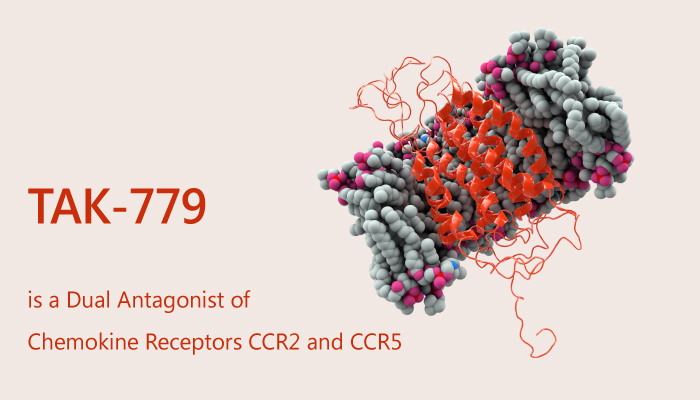Nowadays, people are no strangers to AIDS. It is a kind of infectious disease caused by HIV. The latter primarily acts on human immune system, like CD4+ T cells. These actions are mainly through chemokine receptor.
Chemokine receptors (CCR) exist on the surface of some cells, and interact with chemokine. CCR5 and CCR4 are co-receptors of HIV. The virus commonly enters the target immunological cells via the two receptors. Especially, CCR5 is necessary for the spread of R5-strain of the HIV-1 virus. Accordingly, CCR5 antagonists are potential drugs to treat of HIV.
Today, let’s talk about a CCR5 antagonist, TAK-779.
TAK-779 is a nonpeptide antagonist. It exhibits high affinity for CCR5 in CHO cells, with an IC50 of 1.4 nM. TAK-779 has an IC50 of 27 nM for CCR2 in CHO cells. The value is approximately 20-fold higher than that for CCR5. Furthermore, the antagonist shows no obvious effect on CCR1, CCR3, or CCR4.

Besides, TAK-779 is also a CXCR3 antagonist. It inhibits binding of [125I]-hIP-10 to mCXCR3, with an IC50 of 369 nM.
According to the potent antagonistic effect, TAK-779 also significantly inhibits R5 HIV-1. TAK-779 completely suppresses the replication of R5 HIV-1 in MAGI-CCR5 cells at 32 nM. In addition, TAK-779 does not affect X4 HIV-1. Thus, the suppression is selective.
References:
1. Baba M, et al. Proc Natl Acad Sci U S A. 1999 May 11;96(10):5698-703.
2. Gao P, et al. J Leukoc Biol. 2003 Feb;73(2):273-80.